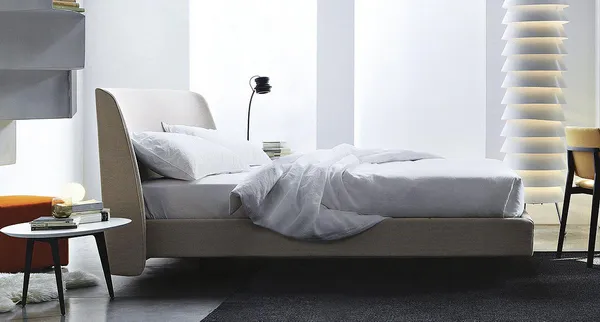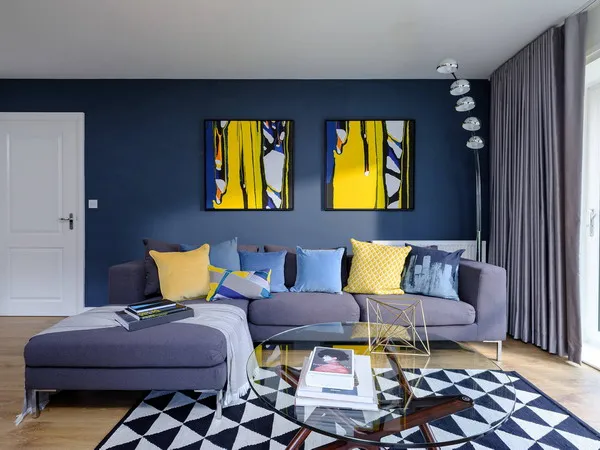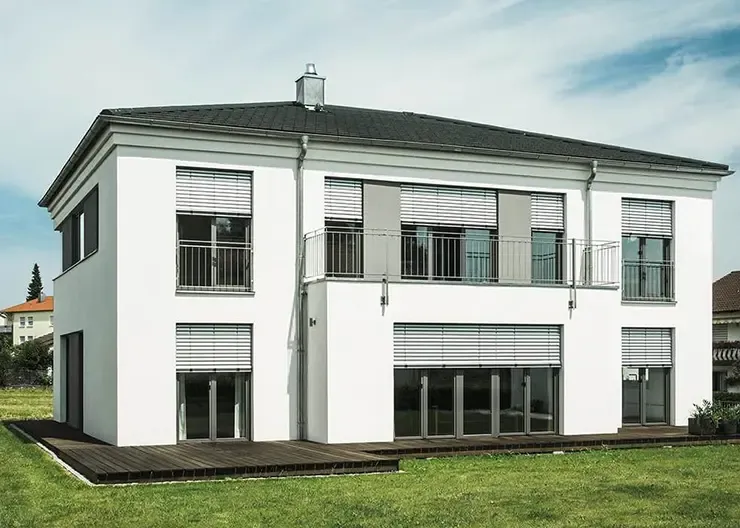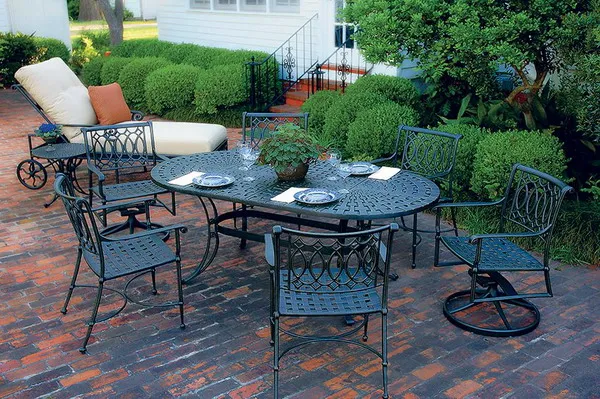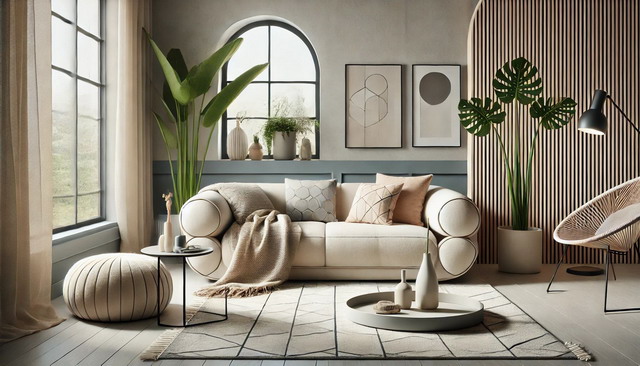Carpet Trends 2025: What’s Shaping the Future of Flooring
Last Updated on September 14, 2024 by Mutiara
As we look ahead to 2025, carpets are taking center stage in the world of interior design. No longer just a practical necessity, carpets are evolving to reflect the latest innovations in style, technology, and sustainability. From eco-friendly materials and high-tech smart carpets to bold colors and luxurious textures, the future of carpeting is full of exciting possibilities. As homeowners and designers alike prioritize comfort, aesthetics, and environmental responsibility, the trends shaping the carpet industry in 2025 are a direct response to these changing needs.
Whether you’re looking to make a bold statement in your living room, create a cozy retreat in your bedroom, or integrate smart home technology into your flooring, 2025 brings a range of options to suit every space. In this article, we’ll explore the top carpet trends for 2025, including innovative materials, cutting-edge designs, and practical solutions that combine beauty with functionality. Let’s take a closer look at what’s in store for the future of carpets and how these trends can transform your home.
Eco-Friendly Carpet Materials 2025
As we move further into the 21st century, the focus on sustainability and environmental responsibility has become a top priority across various industries, and flooring is no exception. Consumers are now more conscious about the environmental impact of their purchases, driving the demand for eco-friendly materials in all aspects of interior design, including carpets. The year 2025 is set to witness a rise in eco-friendly carpet materials, which will cater to homeowners and designers looking for products that are not only beautiful but also sustainable.
What Makes a Carpet Eco-Friendly?
The term “eco-friendly” goes beyond just using organic or natural fibers. It encompasses the entire lifecycle of the carpet—from raw material sourcing and manufacturing to installation, use, and disposal. Carpets that fall under the eco-friendly category are typically made from materials that are renewable, biodegradable, or recycled. Furthermore, the production processes for these carpets often use less energy and fewer resources, ensuring a reduced environmental footprint.
Here are some of the most notable eco-friendly carpet materials expected to gain traction in 2025:
- Recycled Fibers
Recycled fibers have already started to make waves in the carpet industry, and this trend will only continue to grow in 2025. One of the most popular recycled materials used in carpets is polyethylene terephthalate (PET), commonly derived from plastic bottles. By recycling plastic waste into carpets, manufacturers are giving new life to what would otherwise be landfill material, thereby reducing environmental waste and the consumption of virgin materials.
Another innovative approach includes the use of recycled nylon. Some carpet manufacturers collect old, worn-out carpets, break them down, and reuse the nylon fibers to create new products. This not only helps reduce waste but also minimizes the need for new raw materials.
- Organic Wool
Wool is a timeless material when it comes to carpets, known for its softness, durability, and natural insulating properties. However, in 2025, the focus will shift towards organic wool. Organic wool is produced without the use of harmful chemicals, pesticides, or synthetic fertilizers, making it an ideal choice for eco-conscious consumers.
Unlike synthetic materials, wool is renewable and biodegradable, which ensures that it leaves no lasting environmental footprint. Organic wool carpets are also naturally flame-resistant, hypoallergenic, and moisture-wicking, making them a safe and healthy option for homes.
- Sisal and Jute
Natural plant fibers like sisal and jute are poised to become some of the hottest eco-friendly carpet materials in 2025. Both of these fibers are renewable, biodegradable, and grown without excessive water or chemical use, making them highly sustainable options.
Sisal is derived from the leaves of the Agave plant and is known for its strength and durability. Carpets made from sisal are perfect for high-traffic areas, and they can be dyed in various colors to suit different design preferences.
Jute, on the other hand, is softer than sisal and adds a rustic charm to any space. Jute carpets have a unique, earthy aesthetic that makes them ideal for eco-friendly homes looking for a natural, organic vibe. However, due to its softer nature, jute is best suited for low-traffic areas such as bedrooms or living rooms.
- Seagrass
Another popular natural fiber is seagrass, which is harvested from wetlands and coastal areas. Seagrass carpets are extremely durable, moisture-resistant, and naturally hypoallergenic, making them a great choice for households with pets or children. Their smooth texture and neutral color palette give them a sophisticated, minimalist look that blends well with various design styles.
The appeal of seagrass carpets lies in their eco-friendliness—seagrass is fast-growing and requires no harmful pesticides or fertilizers during cultivation. Moreover, its moisture resistance makes it suitable for areas where other natural fibers might struggle, such as kitchens or entryways.
Sustainable Carpet Manufacturing Practices
Eco-friendly carpet materials are only one piece of the puzzle when it comes to creating a truly sustainable product. In 2025, the focus on sustainable carpet manufacturing practices will become equally, if not more, important as the materials themselves. From the factories where carpets are made to the methods of reducing carbon footprints, manufacturers are rethinking how they can produce carpets in a way that is better for the planet.
Energy Efficiency in Production
One of the major trends in sustainable carpet manufacturing is the push toward energy efficiency. Carpet production has traditionally been energy-intensive, but companies are now seeking ways to cut down on their energy consumption. Many manufacturers are adopting renewable energy sources, such as solar and wind power, to run their facilities. By transitioning to cleaner energy, they can significantly reduce the greenhouse gas emissions associated with carpet production.
Some manufacturers are also incorporating energy-saving technologies in their factories, such as LED lighting, advanced insulation, and energy-efficient machinery. These improvements not only help reduce their carbon footprint but also make the production process more cost-effective in the long run.
Water Conservation
Water is a crucial resource in carpet production, especially in the dyeing process. However, traditional dyeing methods can consume large amounts of water and result in wastewater containing harmful chemicals. In 2025, expect to see more manufacturers embracing water-conserving techniques, such as solution dyeing. Solution-dyed carpets are colored by adding dye to the fiber itself during the production process, which eliminates the need for water-based dyeing methods.
Additionally, some manufacturers are adopting closed-loop water systems, which recycle and reuse water throughout the production process, further reducing water consumption.
Reducing Chemical Usage
Consumers are increasingly concerned about the chemicals used in carpet production, especially as it relates to indoor air quality. Many conventional carpets are treated with chemicals that release volatile organic compounds (VOCs) into the air, which can negatively impact health. In response, carpet manufacturers are moving toward chemical-free production methods.
Low-VOC and non-toxic carpets will become more prevalent in 2025, as more brands prioritize the health and safety of consumers. Manufacturers are using natural dyes, adhesives, and finishes that do not release harmful fumes, creating safer indoor environments for homeowners.
Carbon-Neutral and Circular Economy Initiatives
Leading carpet manufacturers are also committing to ambitious sustainability goals, such as achieving carbon neutrality. This means that they are working to balance the carbon emissions from carpet production with initiatives to remove an equivalent amount of carbon from the atmosphere. Companies achieve this by reducing emissions, switching to renewable energy, and investing in carbon offset programs like reforestation or renewable energy projects.
Moreover, the carpet industry is increasingly embracing the principles of the circular economy, where products are designed to be reused or recycled instead of being discarded. Some manufacturers are offering take-back programs, where they collect old carpets from customers and recycle the materials to create new products, reducing waste and extending the lifecycle of their carpets.
Carpets with Integrated Smart Technology
The concept of smart homes has expanded far beyond just lighting, thermostats, and security systems. In 2025, carpets are joining the smart technology revolution, incorporating sensors and tech that can improve both the functionality and comfort of living spaces. Smart carpets are designed to interact with other connected devices in the home, adding a new layer of innovation to modern flooring solutions.
What Are Smart Carpets?
Smart carpets are equipped with sensors and technology embedded within the fibers or the underlayer of the carpet. These sensors can monitor foot traffic, detect changes in weight distribution, or even respond to environmental factors such as temperature and humidity. This level of integration allows the carpet to communicate with smart home systems, providing a range of benefits.
- Health Monitoring
One of the most promising applications of smart carpets is in health monitoring. By tracking the movement of people in the home, these carpets can alert homeowners to potential health issues. For example, the carpet can detect changes in a person’s gait or balance, which could indicate mobility problems or the risk of falls, especially for elderly individuals. In 2025, we expect to see smart carpets used in healthcare settings, elderly care facilities, and homes with aging family members.
- Home Automation Integration
Smart carpets can connect with other home automation devices to create a seamless living experience. Imagine a carpet that detects when someone enters a room and automatically adjusts the lighting or temperature to their preferences. Some smart carpets can even control smart blinds or music systems, creating a personalized environment based on the user’s habits.
- Energy Efficiency
Another benefit of smart carpets is their potential to contribute to energy efficiency. Sensors within the carpet can detect whether a room is occupied and send signals to the heating or cooling system, adjusting it accordingly. This helps to minimize energy use in unoccupied rooms, reducing overall energy consumption and costs.
Bold Carpet Colors and Patterns
Carpet designs in 2025 are set to become bolder and more expressive. Neutral and understated carpets are taking a backseat as homeowners and designers look to make statements with vibrant colors, striking patterns, and creative textures. These bold carpets are not only about aesthetics but also reflect a shift in interior design philosophy where individuality and personality are celebrated.
The Rise of Bold Colors
Gone are the days when beige and gray were the default options for carpets. In 2025, we’re seeing a resurgence of bold, saturated colors that command attention. Jewel tones such as emerald green, sapphire blue, and ruby red are becoming popular choices for those looking to add a touch of luxury to their homes. These rich colors can bring warmth and sophistication to a room, making the carpet a focal point rather than just a background element.
Geometric and Organic Patterns
Patterns are also taking center stage in carpet design for 2025. Geometric patterns, inspired by Art Deco and mid-century modern styles, offer a contemporary edge that appeals to a wide range of design preferences. Whether it’s hexagons, chevrons, or abstract shapes, these patterns can create dynamic, visually interesting spaces.
In contrast, organic patterns inspired by nature, such as flowing lines, leaves, or floral motifs, are also gaining popularity. These designs bring a sense of serenity and connection to nature, making them perfect for homes that aim to create a calming, natural atmosphere.
Mix of Textures
Texture is another element that is expected to play a big role in carpet trends for 2025. Multi-level loop carpets, cut-and-loop designs, and carpets with high and low piles can create depth and dimension, enhancing the overall look and feel of the room. Texture not only adds visual interest but also contributes to the tactile experience, offering a sense of comfort and luxury underfoot.
Luxury Carpets and High-Pile Styles
In 2025, luxury and comfort are key considerations in carpet design, and nothing epitomizes luxury quite like high-pile carpets. Also known as shag carpets, high-pile styles offer a plush, soft texture that feels indulgent and cozy. These carpets are making a comeback as homeowners seek to create inviting, luxurious spaces in their homes.
What Is High-Pile Carpet?
High-pile carpet refers to the height of the fibers—generally, the longer the fibers, the higher the pile. High-pile carpets like shag or frieze carpets have thick, soft strands that offer maximum comfort underfoot. They create a relaxed, casual look while still adding an element of luxury to any room.
- Cozy, Opulent Interiors
High-pile carpets are perfect for creating a cozy and opulent atmosphere in spaces such as living rooms and bedrooms. They provide warmth, both in terms of temperature and aesthetics, making a room feel more inviting and intimate. As people prioritize comfort and coziness in their homes post-pandemic, the popularity of high-pile carpets is expected to soar in 2025.
- Durability and Maintenance
While high-pile carpets offer unmatched comfort, they also come with maintenance considerations. Their longer fibers can trap dirt and dust more easily than low-pile carpets, meaning they require regular vacuuming to stay clean. However, advancements in carpet technology have led to more durable high-pile carpets that are easier to maintain. Stain-resistant treatments and materials help make high-pile carpets a more practical option for busy households.
- A Return to Retro Vibes
The return of high-pile carpets is also a nod to retro interior design trends. Shag carpets, in particular, evoke the nostalgic vibes of the 1970s, but with modern updates that make them suitable for contemporary homes. Expect to see high-pile carpets in trendy, retro-inspired designs, paired with mid-century modern furniture and decor for a stylish, throwback look.
Durable and Low-Maintenance Carpets
In 2025, consumers are looking for carpets that not only enhance the aesthetics of their homes but also stand the test of time. Durability and ease of maintenance have become top priorities, especially in high-traffic areas like living rooms, hallways, and stairs. This shift toward practical flooring solutions means that durable, low-maintenance carpets are set to be one of the biggest trends in carpet design.
What Makes a Carpet Durable?
Durability in carpets comes down to the materials used, the construction method, and any additional treatments applied. In 2025, the focus is on creating carpets that resist wear and tear, stains, and fading while maintaining their appearance over time. These carpets are ideal for families, pet owners, and anyone looking for a long-term investment in their flooring.
- Stain-Resistant Carpets
One of the most important features in durable carpets is their ability to resist stains. Thanks to advancements in carpet technology, many carpets in 2025 will come pre-treated with stain-resistant coatings, making them easier to clean and maintain. Popular options include carpets treated with Teflon or Scotchgard, which prevent spills from penetrating the fibers, allowing homeowners to clean up messes quickly and easily.
- High-Performance Fibers
Synthetic fibers such as nylon and polyester are known for their durability and resilience, making them popular choices for high-traffic areas. In particular, solution-dyed nylon carpets are gaining traction in 2025 for their exceptional durability. These carpets are dyed during the manufacturing process, meaning the color goes all the way through the fiber, making them highly resistant to fading.
Polyester, while softer than nylon, has also made significant improvements in durability and stain resistance. It offers an affordable and stylish option for homeowners looking for a carpet that can handle everyday wear and tear.
- Easy-to-Clean Carpets
Low-maintenance carpets are not only about durability but also about ease of cleaning. Low-pile carpets, for example, are easier to clean and less likely to trap dirt and debris compared to high-pile carpets. Carpet manufacturers are also using advanced technology to create carpets that repel dirt and dust, making vacuuming and regular maintenance a breeze. In 2025, expect to see more carpets with built-in features that promote cleanliness, such as antimicrobial treatments that prevent the growth of mold, mildew, and bacteria.
Modular and Customizable Carpet Solutions
Customization and flexibility are key drivers in the carpet industry for 2025, leading to the rise of modular and customizable carpet solutions. Modular carpets, also known as carpet tiles, offer a flexible and practical approach to flooring, allowing homeowners and designers to create unique designs that reflect personal tastes and adapt to changing needs.
Why Choose Modular Carpets?
Modular carpets are made up of individual tiles that can be arranged in various patterns and designs. This flexibility makes them an excellent choice for both residential and commercial spaces, as they can be easily installed, replaced, or rearranged to suit the needs of the space.
- Versatility in Design
One of the biggest benefits of modular carpets is the ability to create custom designs. Homeowners can mix and match different colors, patterns, and textures to create a one-of-a-kind look. Whether it’s a bold geometric design or a more subtle tonal pattern, modular carpets offer endless possibilities for creativity.
Additionally, modular carpets allow for easy updates and changes. If a particular tile gets damaged or stained, it can be replaced individually without the need to redo the entire carpet. This makes modular carpets both practical and cost-effective in the long run.
- Sustainable and Eco-Friendly Options
Modular carpets are often made with sustainability in mind. Many manufacturers offer carpet tiles made from recycled materials or designed to be recyclable at the end of their life cycle. This focus on sustainability aligns with the broader trend of eco-conscious consumerism in 2025. Modular carpets are also known for their durability, meaning they need to be replaced less frequently, reducing waste.
- Easy Installation and Maintenance
Unlike traditional wall-to-wall carpeting, modular carpets are easy to install and replace. They come with adhesive backing or interlocking systems, allowing for quick and hassle-free installation. This is especially beneficial for commercial spaces or rooms that experience high foot traffic, where a quick turnaround time is essential.
Maintenance is also simplified with modular carpets. In case of spills or damage, only the affected tiles need to be cleaned or replaced, saving time and effort. This makes them ideal for busy households or commercial environments where practicality is a priority.
Carpet Trends for Specific Rooms
Carpet trends in 2025 are not a one-size-fits-all approach. Different rooms in the home have different needs when it comes to flooring, and carpets are being designed to cater to those specific environments. Here’s a breakdown of the best carpet styles for key rooms in the house, each reflecting the unique demands and aesthetic goals of the space.
- Best Carpets for Bedrooms
When it comes to bedroom carpets, comfort is the number one priority. High-pile carpets, such as shag or plush styles, are popular choices for bedrooms due to their softness and warmth. In 2025, luxury high-pile carpets in neutral tones or soothing pastels will be trending in bedrooms, offering a serene and relaxing atmosphere.
Bedrooms are also spaces where hypoallergenic materials, such as wool or carpets treated with antimicrobial finishes, are particularly important, ensuring a healthy indoor environment.
- Best Carpets for Living Rooms
Living rooms are often the focal point of the home, where style and functionality need to meet. Bold, patterned carpets will be a major trend in 2025 for living rooms, allowing homeowners to make a statement with their flooring. Geometric patterns, abstract designs, and vibrant colors will be used to add personality to living spaces.
Durability is also key in living rooms, as these areas see a lot of foot traffic. Low-pile carpets with stain-resistant features will be popular, offering both style and practicality.
- Best Carpets for Home Offices
With the rise of remote work, home office design has become increasingly important, and carpet trends reflect this. Low-pile carpets in neutral or muted tones will dominate home office spaces in 2025. These carpets provide a professional and understated look while also being easy to maintain and clean. Noise-reducing carpets are also gaining popularity, as they help create a quieter, more focused work environment.
For those looking to infuse some creativity into their home office, modular carpet tiles will offer the flexibility to create custom designs while maintaining a sleek, professional appearance.
Conclusion
Carpet trends in 2025 are all about combining style, innovation, and practicality. From eco-friendly materials and smart technology to bold patterns and luxurious textures, carpets are evolving to meet the needs of modern consumers. Whether you’re looking for a durable, low-maintenance option for a busy home or a bold, statement piece for your living room, the carpet trends for 2025 offer something for every taste and lifestyle.
As the flooring industry continues to innovate, carpets are becoming more than just a functional aspect of interior design—they are now a key element in creating beautiful, comfortable, and sustainable homes. Stay ahead of the curve by embracing these trends and making your home’s flooring a reflection of your personal style and values.
